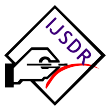Imp Links for Author
Imp Links for Reviewer
Research Area
Subscribe IJSDR
Visitor Counter
Copyright Infringement Claims
Indexing Partner
|
Published Paper Details
|
|
| Paper Title: | Mechanism of Pacemaker in Heart |
| Authors Name: | D.K.Awasthi , Archana Dixit |
| Unique Id: | IJSDR2306163 |
| Published In: | Volume 8 Issue 6, June-2023 |
| Abstract: | A healthy heart has a steady, regular rhythm, but in some people this rhythm can be disrupted. This condition is called arrhythmia. Arrhythmias can have many types and causes, and a PPM is not needed for all arrhythmias. Your doctor will consider the type of arrhythmia you have, how it makes you feel, and any health problems you might have before deciding if you need a PPMApacemaker is a small device that sends electrical impulses to the heart muscle to maintain a suitable heart rate and rhythm. If your heart is having trouble maintaining its own rhythm,you need pacemaker. A permanent pacemaker (PPM) is a small device that is inserted under the skin of your chest to help the heart beat in a regular rhythm. PPMs have two parts: a small battery-powered pacemaker and leads that are connected to your heart. It sits under the skin on the left or right side of your upper chest. The pacemaker sends electrical signals to your heart to keep it pumping at a normal rate. A pacemaker is a small, battery-operated, computer-driven device that’s typically implanted just beneath your skin, usually in the chest area right under the collarbone. Small wires (electrodes) connect the pacemaker to your heart.When the pacemaker’s computer senses an abnormal rhythm, it sends electrical signals through the attached electrodes to your heart, jump-starting it back into an appropriately timed beat.A pacemaker can be programmed to act during episodes of bradycardia (an excessively slow beat), atrial fibrillation (a fast, fluttery heart rhythm), or cardiac arrest (cessation of the beat altogether). |
| Keywords: | - |
| Cite Article: | "Mechanism of Pacemaker in Heart", International Journal of Science & Engineering Development Research (www.ijsdr.org), ISSN:2455-2631, Vol.8, Issue 6, page no.1164 - 1170, June-2023, Available :http://www.ijsdr.org/papers/IJSDR2306163.pdf |
| Downloads: | 000337350 |
| Publication Details: | Published Paper ID: IJSDR2306163 Registration ID:207379 Published In: Volume 8 Issue 6, June-2023 DOI (Digital Object Identifier): Page No: 1164 - 1170 Publisher: IJSDR | www.ijsdr.org ISSN Number: 2455-2631 |
|
Click Here to Download This Article |
|
| Article Preview | |
|
|
|
Major Indexing from www.ijsdr.org
| Google Scholar | ResearcherID Thomson Reuters | Mendeley : reference manager | Academia.edu |
| arXiv.org : cornell university library | Research Gate | CiteSeerX | DOAJ : Directory of Open Access Journals |
| DRJI | Index Copernicus International | Scribd | DocStoc |
Track Paper
Important Links
Conference Proposal
ISSN
 |
 |
DOI (A digital object identifier)
  Providing A digital object identifier by DOI How to GET DOI and Hard Copy Related |
Open Access License Policy
Social Media
Indexing Partner |
|||
| Copyright © 2024 - All Rights Reserved - IJSDR | |||






Facebook Twitter Instagram LinkedIn